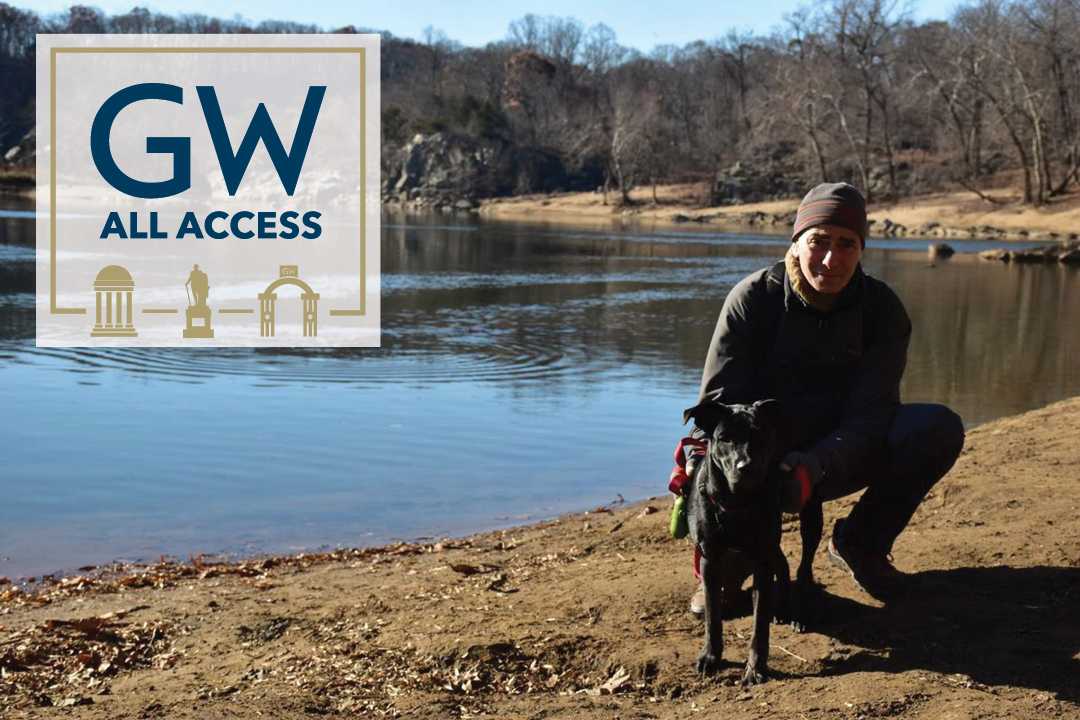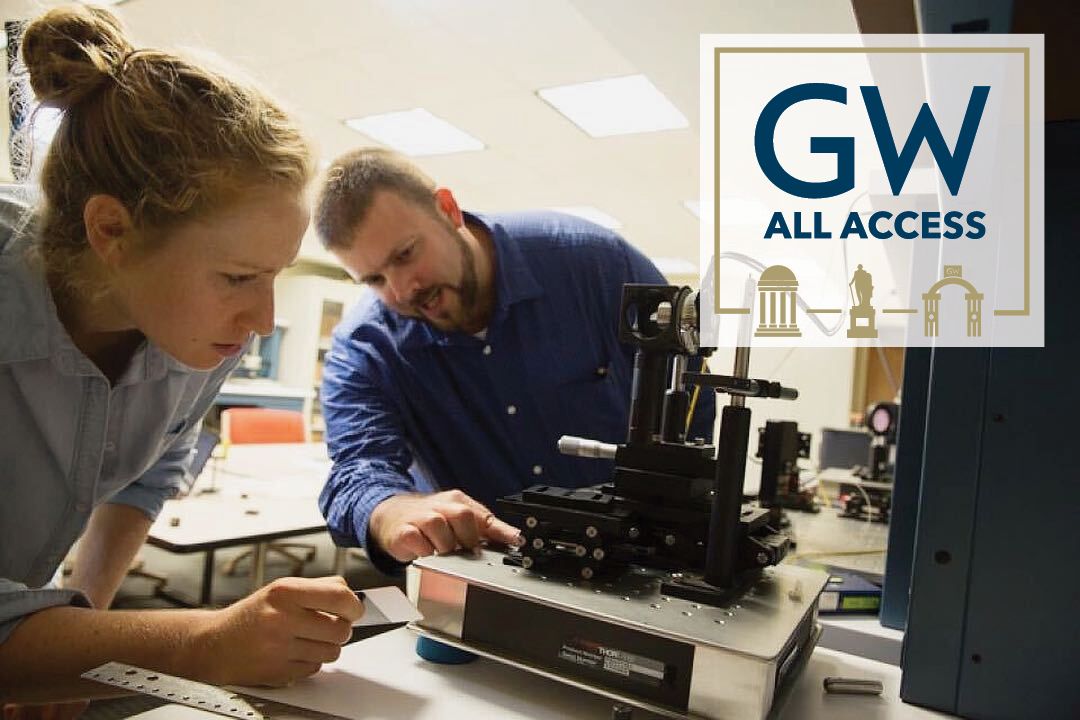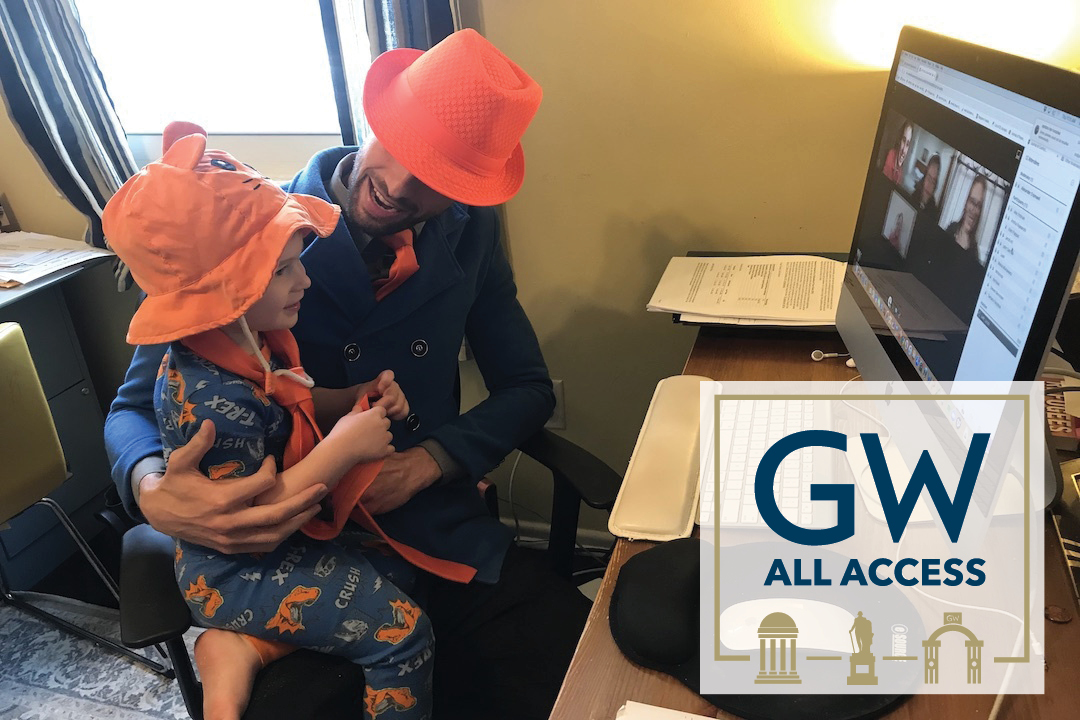A new series from GW Today shows how GW is preparing for the fall semester and a high-quality academic experience.
By Ruth Steinhardt
An important member of Martín Zysmilich’s teaching team will be able to join his classes at the George Washington University this fall: Lola, his rescue dog.
“All my students know Lola and ask about her all the time,” said Dr. Zysmilich, an associate professor of chemistry in the Columbian College of Arts and Sciences. “She’s usually pretty good when I teach now—at the beginning she would start whining because I wasn’t paying attention to her.”
Dr. Zysmilich teaches science for non-majors, which can be an intimidating prospect. Lola’s virtual presence—he introduces her as part of his teaching team—is among the techniques he uses to make his students feel comfortable with him and with each other. Now that almost all of his lectures will be online, they’ll get to see more of her.
In his emergency virtual teaching experience since March, Dr. Zysmilich said he’s already seen some of his more shy students take advantage of the opportunity to safely speak up.
“What I noticed when I switched to online in the spring is that students who never asked questions [in the classroom] would ask questions online, at least in the chat,” he said. “So when we go back to classroom, I hope to still keep a chat window open so students who are shy about asking questions in front of their peers could type on their cell phones and have those questions appear. That’s a great advantage that I got from this online experience.”
The pandemic also opens up lesson possibilities for Dr. Zysmilich, whose science for non-majors class is focused on environmental chemistry in the fall and medicinal chemistry in the spring. Both semesters, Dr. Zysmilich introduces his students to a series of scientific concepts and then helps them apply each to a major societal problem. In the fall, these include ozone depletion, energy production, climate change, water pollution and more. For a unit on viruses in the spring, he usually uses the lifecycle and treatment of the human immunodeficiency virus for a take-home assignment. This year, he used the coronavirus.
“The way I’m teaching online is to try to keep it as close as possible to the experience of teaching in person,” Dr. Zysmilich said. While he does record lectures for participants in incompatible time zones—an Australian student in the general chemistry class he’s teaching this summer, for instance—he tries to convene his classes for as much synchronous learning as possible.
Dr. Zysmilich is no neophyte when it comes to online learning. In fact, he developed and taught GW’s first distance chemistry class several years ago. Still, he admits that there are challenges.
“I’m asking for feedback constantly,” he said. “In an in-person class I can tell if they don’t understand what I’m saying, because I can see their faces. But online I ask ‘Is that clear for everyone?’ and then I have to wait at least 30 seconds until someone says yes or no. So teaching can take a little longer online.”
It’s also harder to get to know students, Dr. Zysmilich said, but he hopes to surmount some of that difficulty by holding extensive virtual office hours. He believes that’s the best way to establish the important one-on-one relationships between students and teachers. Like students who might be nervous asking questions in front of their classmates but will do it online, Dr. Zysmilich hopes that students who might be too shy or stressed to show up to his office in person will feel more comfortable dropping in for a virtual chat.
“I emphasize all the time that office hours are not just to talk about chemistry,” Dr. Zysmilich said. “We can talk about movies, we can talk about your plans for the future, you can ask for career advice—students just come to say hi and chat about different things.”
The rapport established during those informal conversations will be just as important in a post-COVID-19 world as they were before, Dr. Zysmilich said.
“I try to encourage them and remind them that at some point they’re going to need a recommendation letter,” he said. “It doesn’t have to be me, but there should be a professor that you know well enough so when you want to ask for that recommendation, you don’t have to start your email with ‘I don’t know if you remember me, but…’ We need to get to know each other.”




